Search
Did you mean: Samson?
Search Results

Image
Sargon II and Sennacherib
Gypsum wall relief depicting the Assyrian king Sargon II, who holds a long staff, greets a high official (who still holds a sword at his side), in very close proximity, almost touching him. This official is probably his son, Sennacherib...
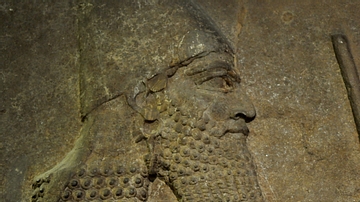
Image
Sargon II, Khorsabad
Detail of a gypsum wall relief showing the Assyrian King Sargon II. Neo-Assyrian Period, 710-705 BCE. From the palace of Sargon II at Khorsabad, Mesopotamia, Modern-day Iraq. (The British Museum, London).
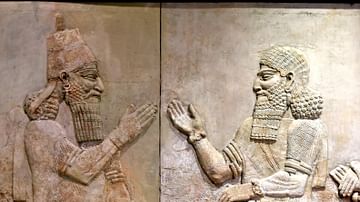
Image
Sargon II and Turtanu
This almost 3 meters high alabaster bas-relief depicts the Assyrian king Sargon II (left; wearing the typical conical hat). Recognizable by the long sword hanging on his side, diadem, long curly beard, and the elegant dress, a figure greets...
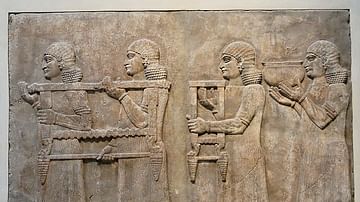
Definition
Dur-Sharrukin
Dur-Sharrukin (modern Khorsabad, Iraq) was a city built by Sargon II of Assyria (r. 722-705 BCE) as his new capital between 717-706 BCE. The name means Fortress of Sargon and the building project became the king's near obsession as soon as...

Definition
Sargonid Dynasty
The Sargonid Dynasty was the last ruling house of the Neo-Assyrian Empire from 722-612 BCE, beginning with the reign of Sargon II and ending with fall of the Neo-Assyrian Empire. Some of the most famous kings in the history of Assyria come...

Image
Birth of Sargon of Akkad
Clay tablet with the birth of Sargon of Akkad and his argument with the king of Kish, late 3rd millennium BCE, now in the Louvre, Paris
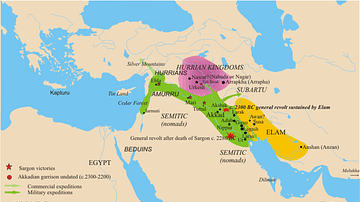
Definition
Akkad and the Akkadian Empire
Akkad was the seat of the Akkadian Empire (2334-2218 BCE), the first multi-national political entity in the world, founded by Sargon the Great (r. 2334-2279 BCE) who unified Mesopotamia under his rule and set the model for later Mesopotamian...

Image
Inscription of the Birth of King Sargon of Akkad
This fragment of a clay tablet narrates in 17 lines of cuneiform inscription the origin of Sargon and recounts how as a baby he was found in a basket floating in a river. Sargon reigned from 2334-2279 BCE. From the library of Ashurbanipal...
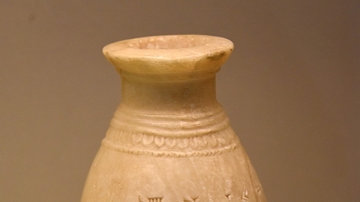
Image
Alabaster Jar of Sargon II
The cuneiform inscription on this alabaster vessel mentions that it belongs to king Sargon II. Neo-Assyrian Period, reign of Sargon II, 721-705 BCE. From the North-West Palace at Nimrud, Northern Mesopotamia, modern-day Iraq. (British Museum...
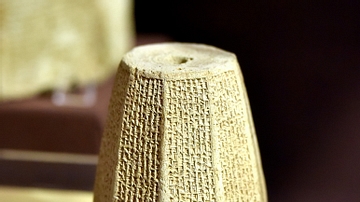
Image
Octagonal Prism of Sargon II from Khorsabad
The cuneiform inscription on this octagonal spindle-shaped clay prism narrates the military campaigns of the Neo-Assyrian king Sargon II (reigned 722 - 705 BCE). Neo-Assyrian period, late 8th century BCE. From Nineveh, in modern-day Ninawa...